Shortlisted in the eMTB category of our 2022 Bike of the Year awards, YT’s Decoy Core 4 MX tops out the brand’s enduro-focused electric mountain bike range.
It's designed around a mullet wheel setup, with a 29in wheel up front matched with a 27.5in rear. It has 165mm of rear-wheel travel.
The Core 4 version’s spec is intended to fine-tune the performance of its frame and four-bar Virtual Four Link (V4L) suspension kinematics with top-spec dampers from Fox, Crankbrothers’ Synthesis Alloy wheels and a full Shimano M8100 drivetrain.
It’s fitted with Shimano’s EP8 motor that’s powered by a custom-made 540Wh battery, cached within the down tube.
YT Decoy Core 4 MX frame and suspension

Both the front and rear triangles of the Decoy’s frame are made from YT’s high-modulus carbon fibre in a bid to reduce weight without sacrificing strength.
The driveside chain and seatstays feature in-built chain slap protection made from PA 66 – a hard-wearing rubber – and can be removed easily for replacement.
It has full-length internally routed cables with tubes to aid installation. Foam wrapping is claimed to reduce cable rattle, while the entry and exit ports have plugs to reduce water and mud ingress. The pivots all run on double-sealed industrial bearings, but also feature a third seal to prolong their life.
The bike features an integrated headset to reduce stack height and improve stiffness. The ACROS BlockLock headset limits the steering angle to prevent damage to the fork crown and underside of the down tube, but should the headset fail, the down tube also has impact-protection pads.
Beneath the rear shock is space for YT’s specially designed Thirstmaster 6000 water bottle with a 600ml capacity.
Suspension kinematics

YT’s Decoy V4L suspension uses a Horst-link design, where the rear wheel is mounted to the seatstay, with a pivot sitting in front of the axle joining the seatstays and chainstays together.
The design has 165mm of travel, and YT claims the V4L design is sensitive at the start of its travel, then offers good mid-stroke support, finally ramping up with plenty of bottom-out resistance. It’s also claimed to have high levels of anti-squat to improve pedalling efficiency.
According to Linkage Design, the Decoy is 32.25 per cent progressive through its travel, making it one of the more progressive bikes on the market.
At sag point, roughly 30 per cent into the bike’s travel in the lowest cassette sprocket, it has roughly 85 per cent anti-squat, making the suspension more likely to bob when pedalling rather than remain static.
It has between 78 per cent and 48 per cent anti-rise figures from full travel to bottom-out. This means the bike’s suspension is more likely to extend under braking (rather than compress or remain static), potentially improving its ability to remain active.
YT Decoy Core 4 MX battery and motor

The Shimano EP8 motor offers 85Nm of torque and 250W of power.
It’s paired with a custom-made YT battery with a 540Wh capacity. This is less than Shimano’s own 630Wh battery seen on most EP8-specced bikes, but is claimed to offer more power in a smaller space thanks to a higher energy density.
The battery is secured to the down tube using two bolts, making removal easy, and can be charged on or off the bike.
However, the YT battery uses its own charger with a proprietary port. That means standard Shimano STEPS chargers can’t be used to charge the Decoy.
The on/off switch is located underneath the top tube out of harm’s way. The E7000 display has a monochrome screen, rather than the colour EM800 version, and is paired with the older, flatter-buttoned E7000 switch.
The EP8 features three riding modes (eco, trail, boost) and a walk function. Each mode has tunable assistance and torque levels in the e-Tube Project smartphone app, which connects via Bluetooth.
YT Decoy Core 4 MX geometry
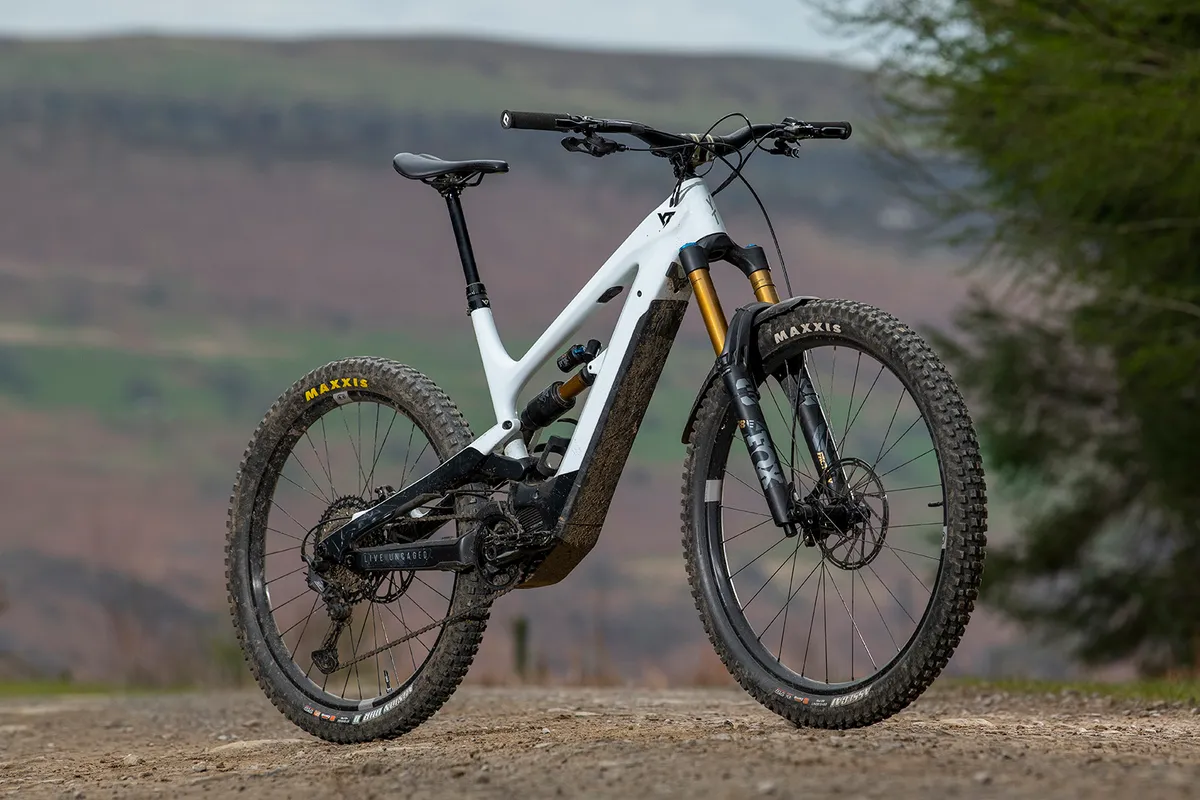
I chose to test the extra-large Decoy after looking at the geometry charts. The 449mm reach on the size large would have been too small for me, so I sized up to the XL to access the 469mm reach.
With the increase in reach comes a longer seat-tube length at 470mm, up 25mm on the large bike. Chainstay figures are 442mm across the size range, with the XL’s wheelbase measuring 1,259mm.
The shock-mount geometry adjustment flip chip has two positions: low and high. In the low setting, the head angle is 64.5 degrees and the seat tube angle 75.5 degrees.
In the high setting, the figures are 65 degrees and 76 degrees respectively. The bottom-bracket height changes from 344mm (low) to 352mm (high).
In the context of enduro riding, the Decoy’s figures aren’t especially modern or extreme, neither are they particularly conservative.
Arguably, the head angle could be marginally slacker and the reach figure longer for each size, where I would have preferred to be riding a large bike rather than an extra-large, given my average 178cm height.
| | S | M | L | XL | XXL |
|---|---|---|---|---|---|
| Seat angle – l/h (degrees) | 75.5/76 | 75.5/76 | 75.5/76 | 75.5/76 | 75.5/76 |
| Head angle – l/h (degrees) | 64.5/65 | 64.5/65 | 64.5/65 | 64.5/65 | 64.5/65 |
| Chainstay (mm) | 442 | 442 | 442 | 442 | 442 |
| Seat tube (mm) | 400 | 420 | 445 | 470 | 495 |
| Head tube (mm) | 95 | 100 | 105 | 115 | 125 |
| Bottom bracket height - l/h (mm) | 344/352 | 344/352 | 344/352 | 344/352 | 344/352 |
| Wheelbase (mm) | 1191 | 1213 | 1235 | 1259 | 1284 |
| Standover (mm) | 752 | 738 | 724 | 714 | 702 |
| Stack (mm) | 642 | 629 | 633 | 643 | 652 |
| Reach (mm) | 409 | 429 | 449 | 469 | 489 |
YT Decoy Core 4 MX specifications
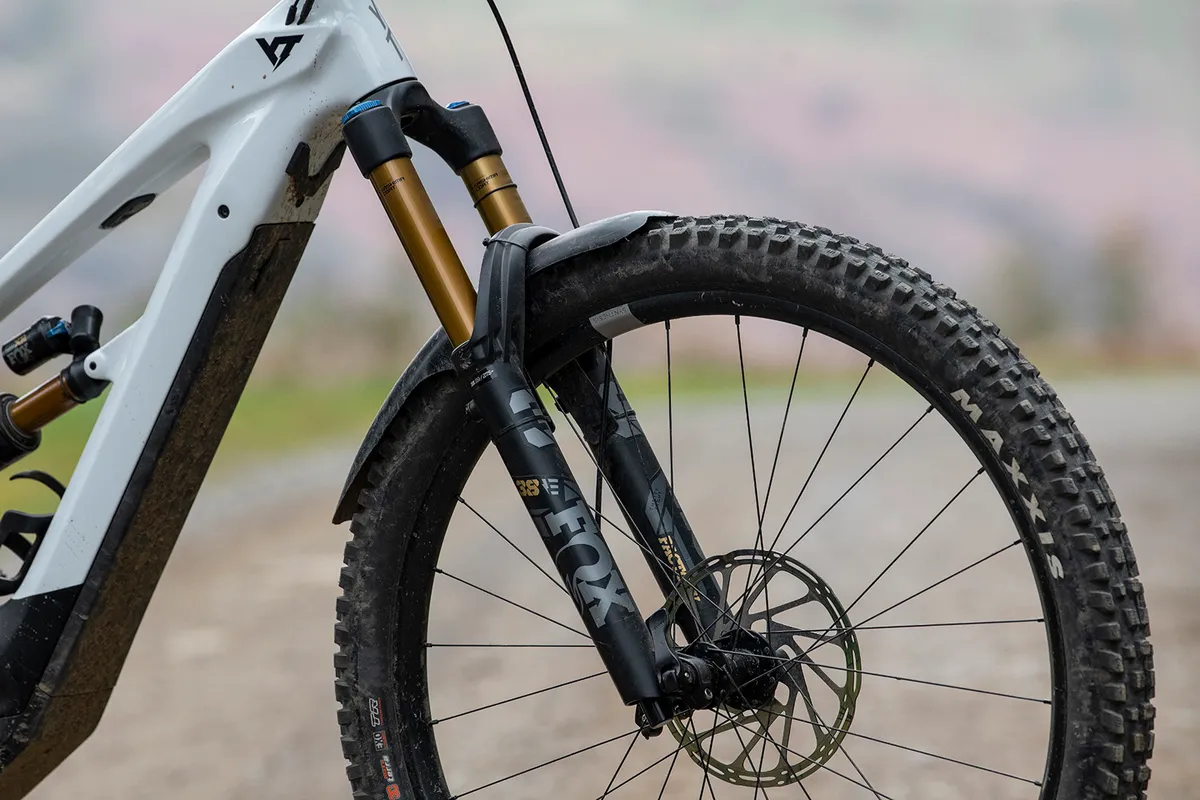
The Decoy’s spec leaves little to reproach. Up front is Fox’s Factory 38 fork with 170mm of travel and high- and low-speed compression and rebound adjustment, matched with Fox’s Float X2 Factory rear shock with the same adjustments. It’s fitted with Shimano’s 12-speed XT M8100 drivetrain.
Crankbrothers’ highly revered Synthesis Alloy E-MTB rims with Industry I9 hubs are wrapped in Maxxis rubber. Up front is an Assegai EXO casing MaxxTerra 29x2.5in tyre, while out back is a Minion DHR II EXO+ casing MaxxTerra 27.5x2.6in.
Elsewhere, there’s a host of branded parts, including a bar and stem from Renthal and an SDG saddle and ODI grips. YT’s Postman dropper is the only bit of in-house kit from the brand, with the extra-large bike getting 170mm of drop.
My size extra-large test bike without pedals weighed 23.09kg.
YT Decoy Core 4 MX ride impressions
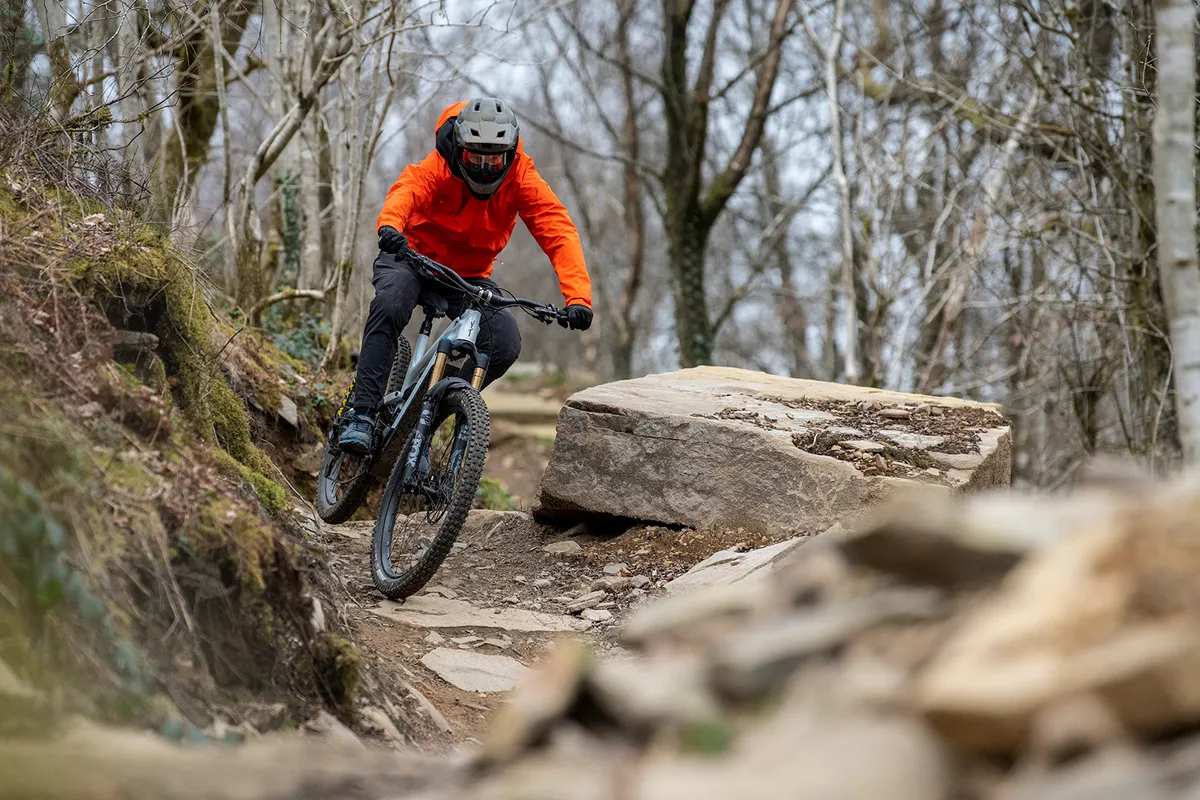
I tested the Decoy in Scotland’s Tweed Valley on the same trails used for the UK’s round of the Enduro World Series.
Conditions ranged from mid-winter mud and slop through to grip-rich hero dirt and wind-dried dust.
YT Decoy Core 4 MX setup
Using YT’s setup guide, I inflated the Fox 38 fork to the recommended 98psi pressure and installed three volume-reducer spacers. This gave me 37mm of sag, slightly less than YT’s recommendation of 42-51mm.
After experimenting with more sag and lower spring pressures, I set the fork to its recommended pressure. All compression and rebound adjusters were set to fully open.
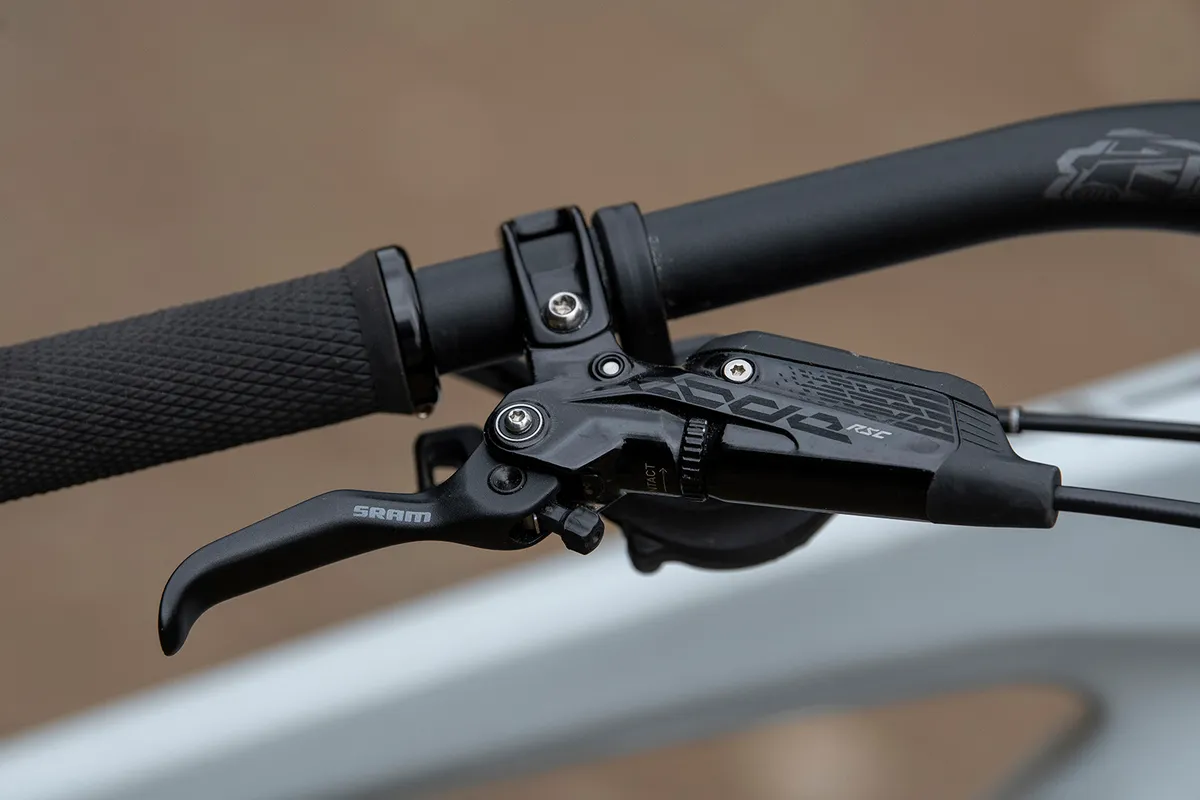
YT’s guide recommended 196psi and one volume-reducer spacer in the X2 shock to give 19mm of shaft sag. I ended up reducing this to 185psi, but keeping the single volume-reducer spacer.
This increased sag slightly, but thanks to the progressive leverage rate didn’t cause excessive bottoming. I set the compression and rebound adjusters to fully open.
I inflated the tyres according to trail conditions, but thanks to the EXO+ casing rear tyre having sacrificed sidewall stability and reduced puncture protection, I ended up running more pressure than I usually would.
After trying the geometry flip chip in the high and low settings, I left it in the low setting for the test period.
YT Decoy Core 4 MX climbing performance
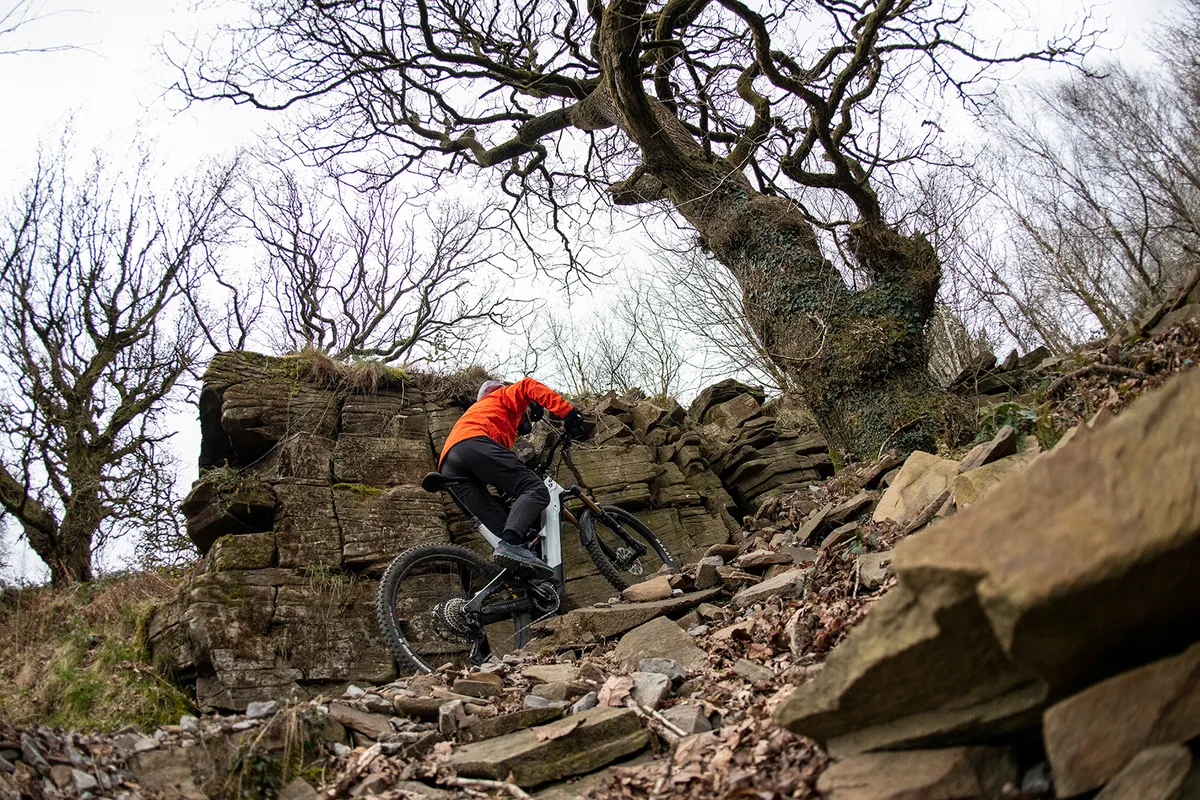
Pointing uphill while pedalling seated, the Decoy has an aggressively stretched riding position, where a large portion of my weight was put through my hands rather than my sit bones.
This was caused by several factors combining. The slack-feeling seat tube angle and a fairly long top tube, combined with a 50mm stem, increased the distance between the saddle in its up position and the handlebars.
This made the Decoy most at home when pushing harder on climbs or flat sections, when you instinctively want to lower your chest towards the bars, mimicking the position the frame’s geometry puts you in.

Thanks to the slack-feeling seat tube angle, accentuated by increasing saddle height, my feet felt as though they were quite a long way in front of my hips, also making my backside feel a long way rearward over the back wheel. This reduced comfort.
However, the rearward-biased seated riding position did provide plenty of easy-to-access grip that felt intuitive to feed in through the high-volume, wide Maxxis Minion DHR II rear tyre.
Its super-supportive rear suspension helped keep the bike propped up in its travel when scaling steep climbs by limiting additional sagging as my weight was transferred further onto the back wheel.
This certainly mitigated some of the effects of the slack-feeling angle, especially compared to bikes with similar geometry and less progressive rear ends.
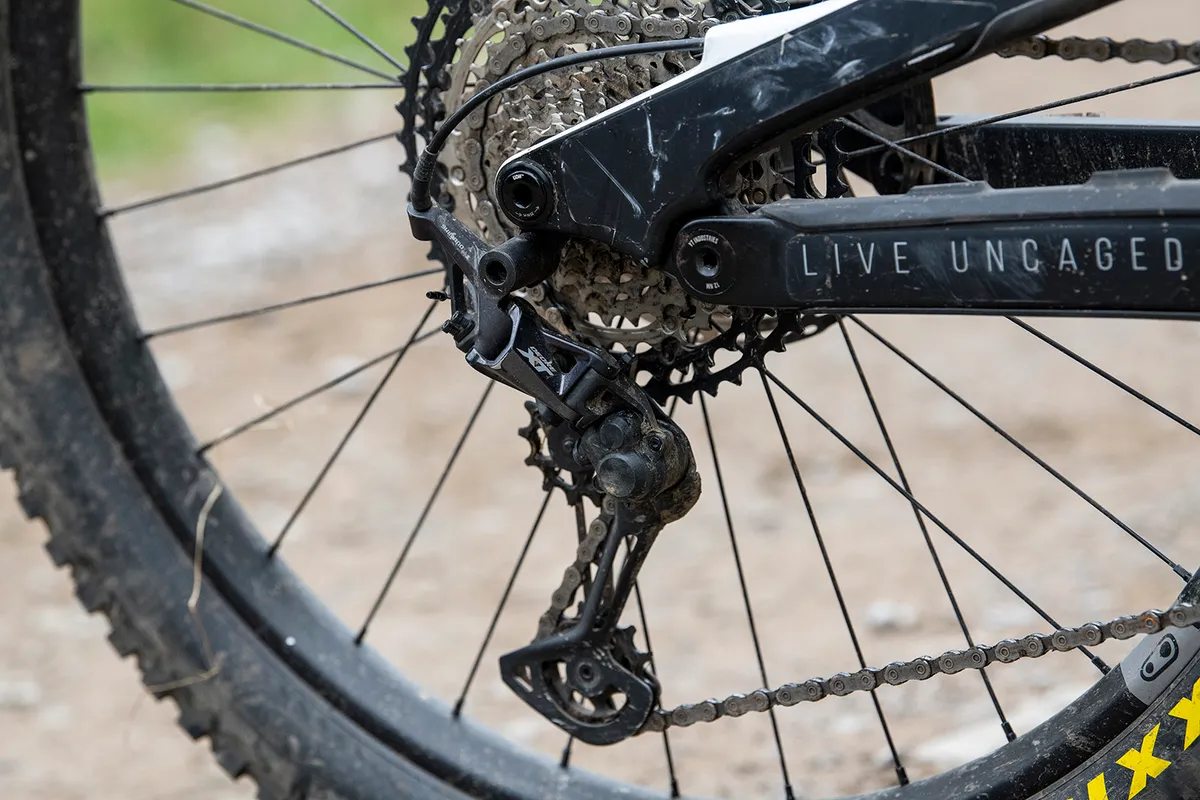
Care did need to be taken to stop front-wheel lift when gradients really steepened, however. Although the fairly long 442mm chainstays helped, the front wheel did still tend to pick up if too much power was applied through the pedals, even when my body position was low over the bars or far enough forward on the saddle.
I found the best way to reduce this was to run the seat lower than I would usually, steepening the effective seat tube angle.
Trail chatter and small bumps were absorbed well, as the highly progressive rear end meant lower spring rates could be run with few trade-offs, giving great comfort and traction.
Battery life

In terms of battery life, the custom-made 540Wh unit can’t compete with the range of the 630Wh Shimano battery found on most other EP8-equipped bikes. Riding with people on bikes with the larger battery, I generally had to select a lower output mode to ride for the same amount of time, distance and elevation change.
Although YT’s theory behind using its own battery is sound, in practice, it isn’t much smaller in size than Shimano’s 630Wh.

It resulted in some frustrating scenarios where I either couldn’t keep up with other riders in my group when using a lower-power mode to extend range, or I had to finish my ride earlier because I’d run out of juice.
In Boost, the battery ran out of charge after between 900 and 1,100 metres of climbing, depending on conditions.
YT Decoy Core 4 MX descending performance
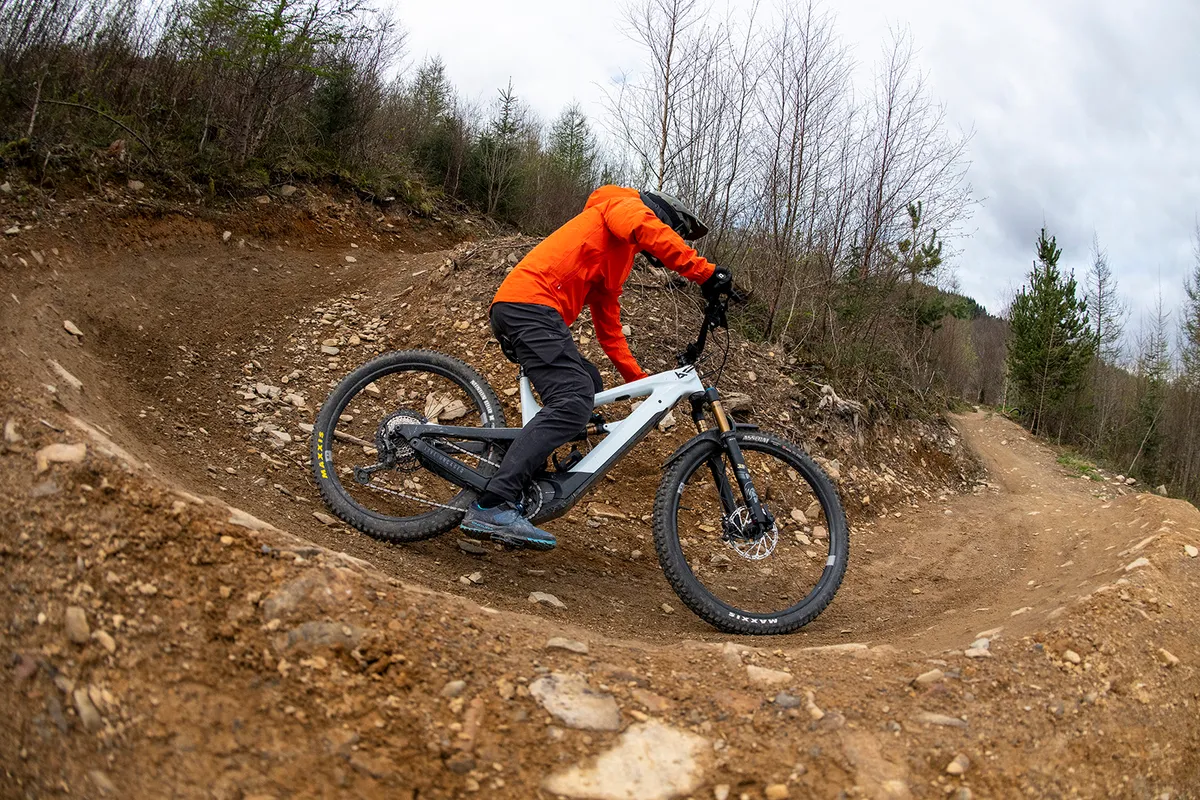
The Decoy’s downhill performance is dominated by its poppy, playful and seriously fun handling and suspension. Although some of its geometry figures – such as the head tube angle and reach – look conservative on paper, the bike works well as a full package.
Its hand-to-feet relationship and poppy suspension are a perfect match. It encouraged me to flick and throw it across the trail and confidently into corners, where smaller movements had a bigger effect on its chassis.
This eagerness to manoeuvre about was backed up by the brilliant mid-stroke support given by the Decoy’s progressive rear end.
Hammering into turns was almost consequence-free, where the bike resisted bombing through its travel, helping to preserve its geometry.
Addictive rushes of speed came regularly and easily because the frame could be loaded up and pumped through the apex without fear of bottoming out.
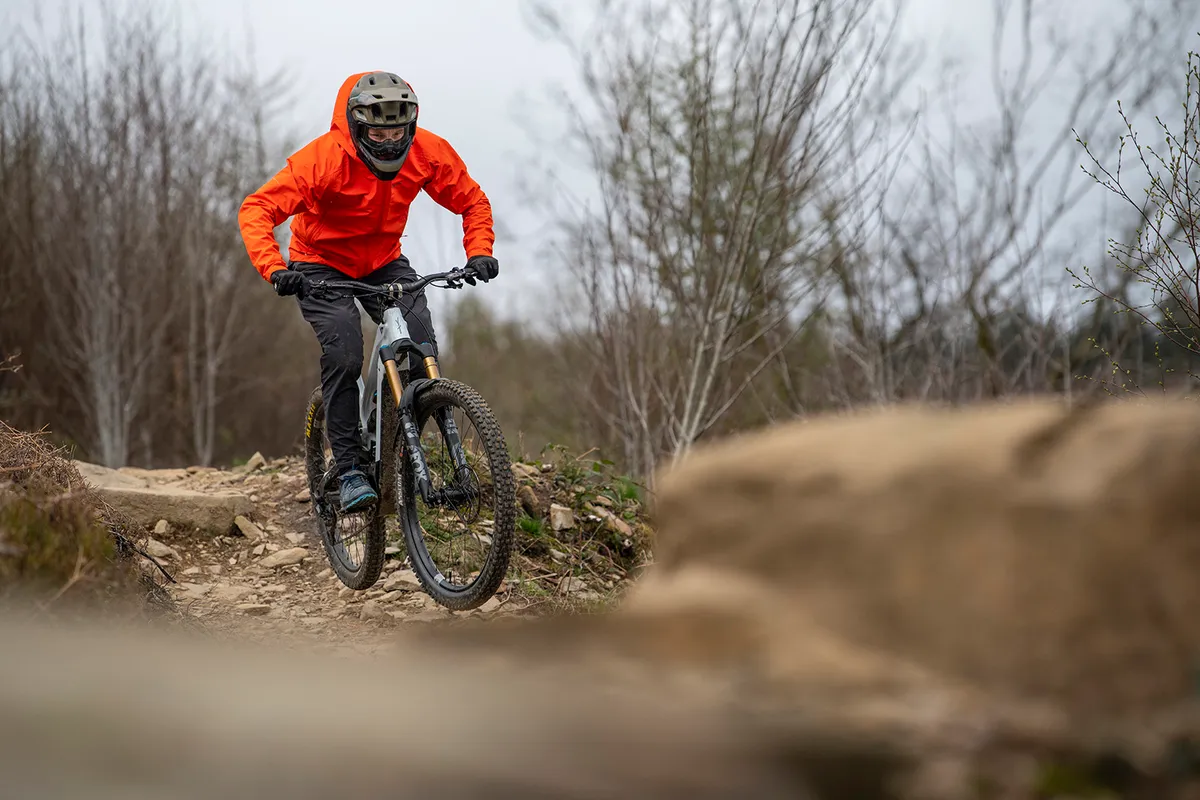
The frame’s squat and stout stature made me feel as if I was hunkering down in the turns, railing around them. The willingness of the Decoy to enter and stay in turns gave it a truly enthusiastic ride quality.
Little lips and undulations could be used as take-offs, where loading the bike into the floor gave a highly rewarding pop, helping to generate speed or increase the fun factor.
This natural-feeling and highly intuitive ride made it easy to hop onto the Decoy and feel right at home. This unlocked quicker speeds sooner, but also meant that it had a bit of a glass ceiling, limiting how fast I could ride comfortably.
Its geometry, therefore, limited its outright potential.
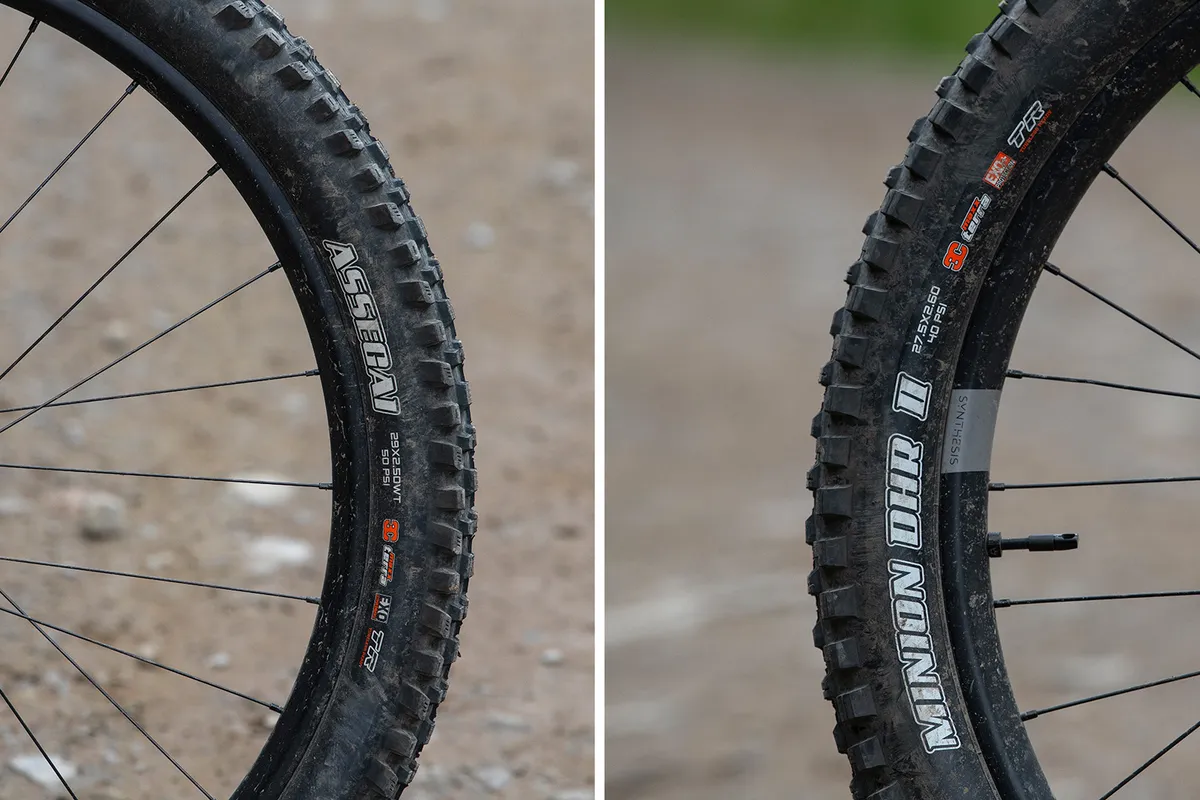
Once the trails got particularly steep, bumpy, or fast I felt as though my body position defaulted rearwards to compensate for the quicker, flicky steering and handling.
Although the rear suspension was more than up to the job of supporting the rearward-shifting weight, a slacker head tube angle would have lessened the chances of it happening altogether.
I found the tyre casings also limited how hard the bike could be ridden. The EXO+ rear tyre ripped after only a handful of rides on terrain the Decoy is intended for, and it tended to burp air regularly. A DoubleDown casing rear tyre would be a better fit for the bike’s intended use.
To improve carcass stability, I had to increase tyre pressures more than I wanted. In the high-volume, thin-casing tyres, this tended to increase pinginess in rough terrain, where the tyre couldn’t deform as much, and rebounded quickly compared to one at a lower pressure or with a thicker carcass.
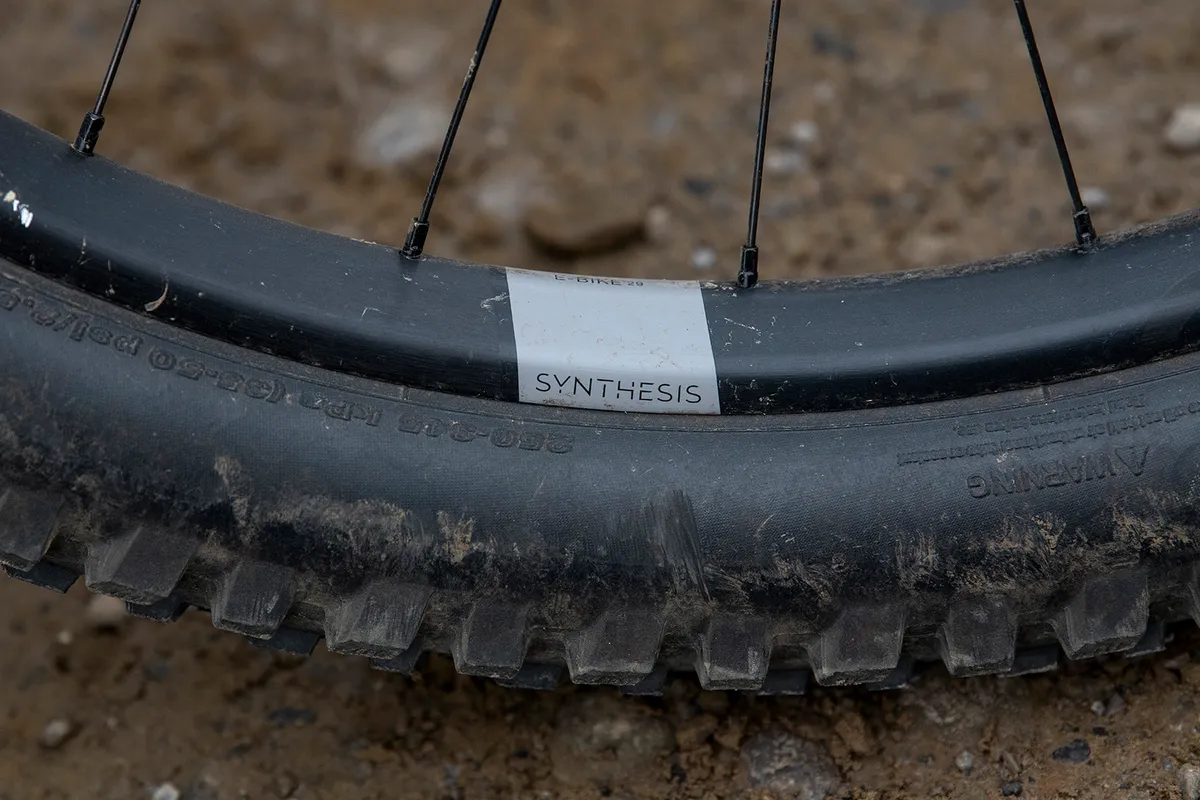
Crankbrothers’ Synthesis front wheel did a good job of improving how smooth the Decoy felt thanks to its in-built compliance, and is a great spec choice from the German brand.
The reach and seat tube figures are mismatched, with the seat tube long compared to the bike’s reach. This meant it was impossible to get the seat as low as I wanted on the descents for my corresponding sweet-spot reach figure.
Shorter riders who want longer reaches will notice this issue most, but it would be good to see YT reduce the seat tube’s length and increase the Decoy’s reach.
How does the YT Decoy Core 4 MX compare?

The Decoy’s travel figures pit it against the Nukeproof Megawatt, Giant Reign E+ 1 and Mondraker Level R.
From a performance perspective, the Decoy falls short on both the climbs and descents compared to the Megawatt and Level R, mostly thanks to its slightly conservative geometry playing against it when the trails get truly gnarly, whether pointing up or down.
The Decoy is more fun and slightly easier to ride than the Giant and Mondraker, but can’t compete with the Nukeproof’s competence and outrageously playful character.
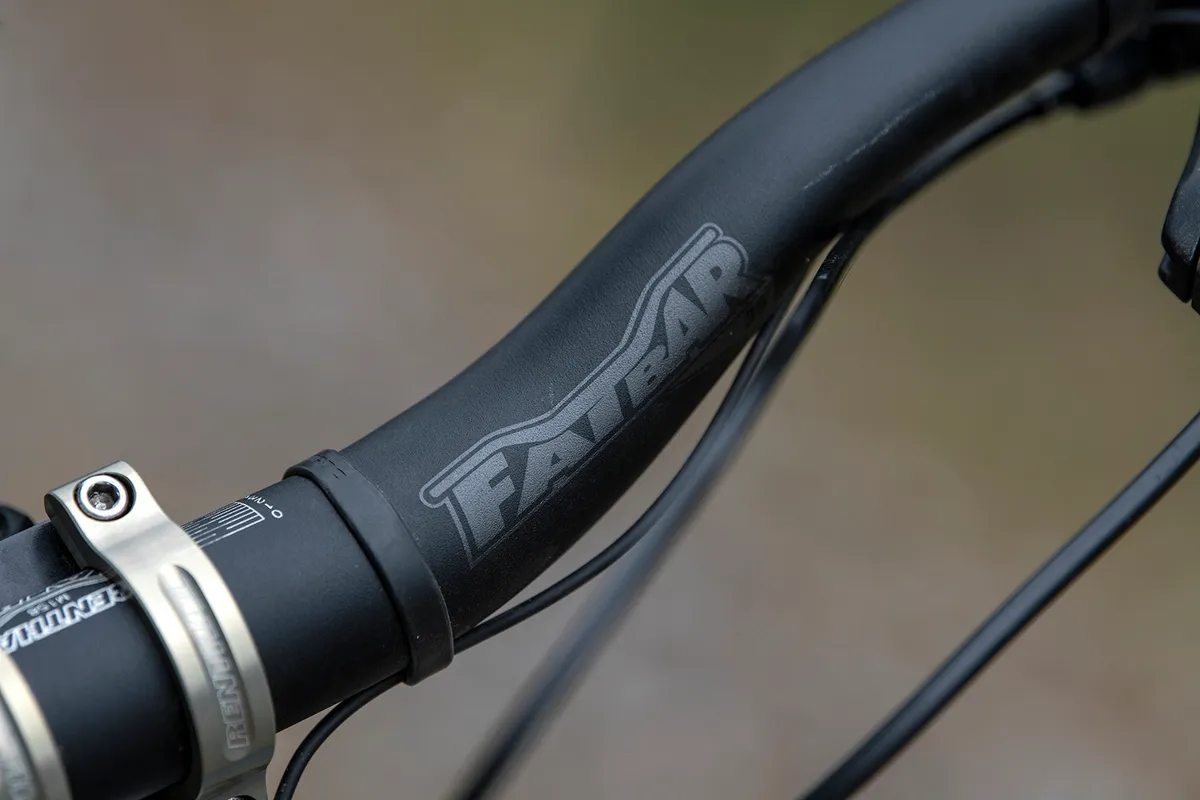
It’s also lacking in battery power, with only 540Wh on tap, but is fitted with Shimano’s frugal and fairly powerful EP8, so shouldn’t be left too far behind on a fire-road drag race.
It’s well-specced, especially compared to the Giant and Mondraker, but doesn’t topple the Megawatt in terms of value, costing just over £200 more.
YT Decoy Core 4 MX bottom line

Despite the Decoy’s geometry looking a little dated on paper, it’s a marvellously fun bike to ride on almost all types of terrain. It’s best suited to riders looking to pop, whip and flick their way down the trail, rather than outright speed demons or hard chargers.
The long seat tube could be limiting for shorter people who want longer reach figures, however.
Its battery capacity might be an issue for some too, especially if all your riding friends have bigger ones fitted to their bikes, because you either won’t be able to keep up or will have to go home earlier.It’s well-specced, but there are better bikes for the cash.
How we tested
Despite this being the inaugural edition of eMTB Bike of the Year test, we’ve had plenty of experience testing ebikes to their absolute limits. That means finding out which of these eight bikes is the best electric mountain bike currently on sale was made a little easier.
Although that’s not say our job was simple, and choosing a winner came down to the wire, where the second and first place bikes swapped positions more times than we checked our tyre and shock pressures.
The majority of the ebike testing happened in Scotland’s Tweed Valley, home to the legendary Glentress trail centre, Golfie enduro tracks and Innerleithen downhill runs.
The terrain we tested the bikes on, therefore, was wide in scope and representative of what a modern enduro bike should be able to handle, whether that was gravity-fuelled laps on the DH tracks, epic enduro missions with long descents or gruelling trail rides with hours in the saddle.
To win this year’s test, we were looking for a bike that offered the best all-round package with fewest compromises and was able to perform in every type of riding we could throw at it.
In an ode to a bike tester’s cliché, it had to descend like a downhill bike, pedal and climb like a cross-country bike and be as comfortable to ride as an enduro bike.
Our 2022 eMTB Bike of the Year contenders are:
Product
| Brand | yt_industries |
| Price | 11999.00 AUD,6999.00 GBP,7999.00 USD |
| Weight | 23.0900, KILOGRAM (L) - |
Features
| Fork | Fox 38 Factory GRIP2 EVOL, 170mm (6.7in) travel |
| br_stem | Renthal Apex 35, 50mm |
| br_chain | Shimano XT M8100 |
| br_frame | Ultra Modulus carbon, 165mm (5.9in) travel |
| br_motor | Shimano EP8/Shimano BT-80350 504Wh/Shimano SC-EM800 |
| Tyres | Maxxis Assegai 3C Maxx Terra EXO TR WT 29x2.5in (f), Maxxis Minion DHR II 3C Maxx Terra EXO+ TR WT 27.5x2.6in (r) |
| br_brakes | SRAM Code RSC, 200/200mm rotors |
| br_cranks | Shimano XT M8150, 36t |
| br_saddle | SDG Bel Air III |
| br_wheels | Crankbrothers Synthesis Alloy E-MTB I9 1/1 |
| br_headset | ACROS AZX-260 |
| br_shifter | Shimano XT M8100 |
| br_cassette | Shimano XT M8100, 10-51t |
| br_seatpost | YT Postman (dropper) |
| br_gripsTape | ODI Elite Motion V2.1 |
| br_handlebar | Renthal Fatbar 35, 800mm |
| br_rearShock | Fox Float X2 Factory |
| br_availableSizes | S, M, L, XL |
| br_rearDerailleur | Shimano XT M8100 (1x12) |

